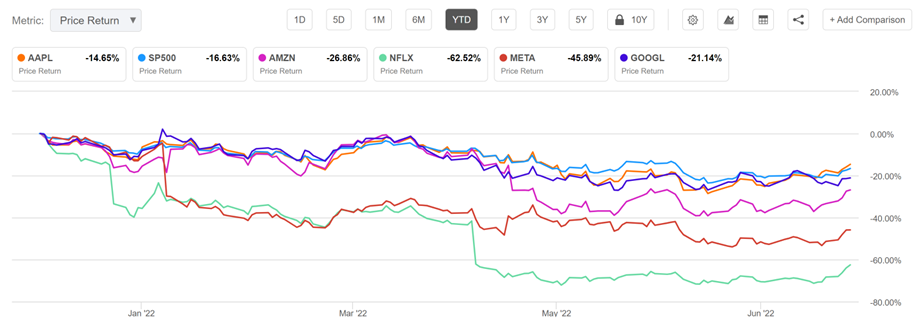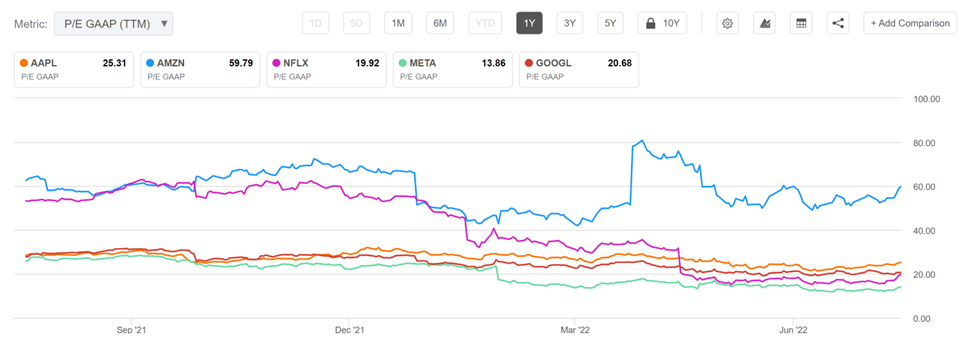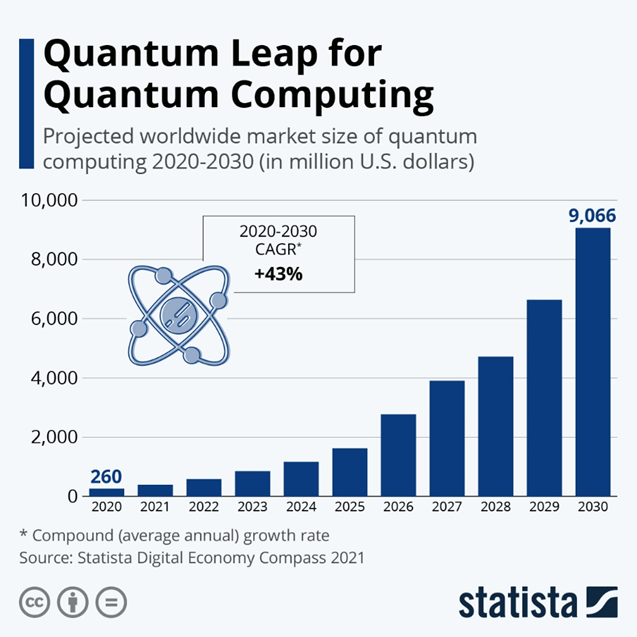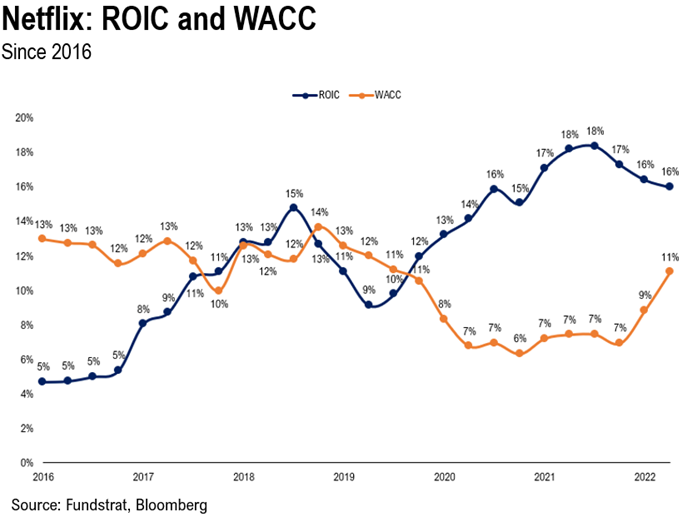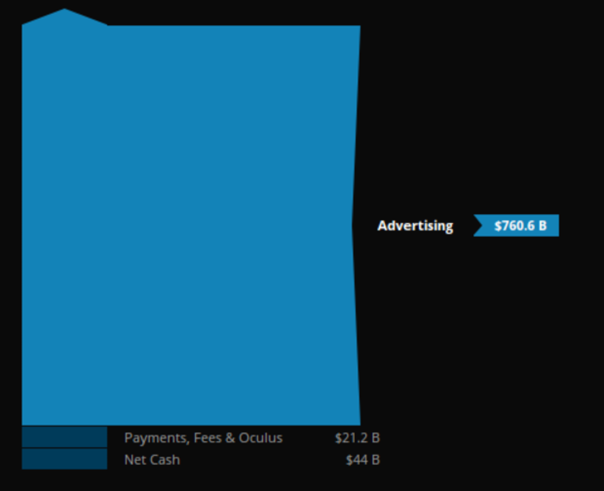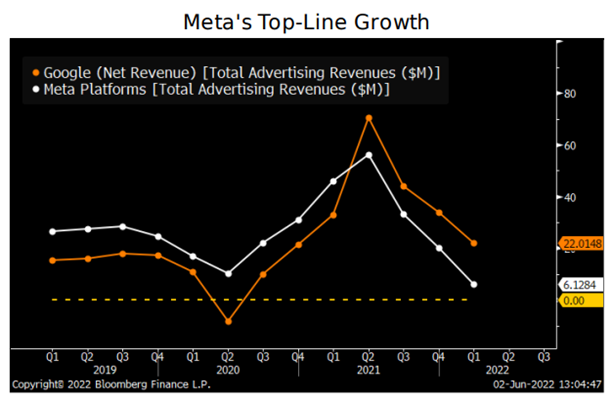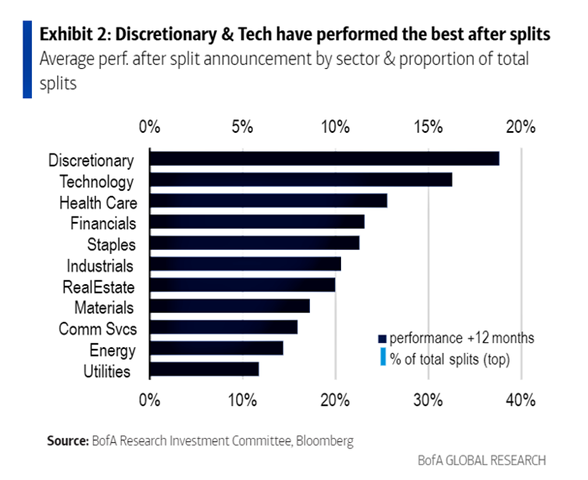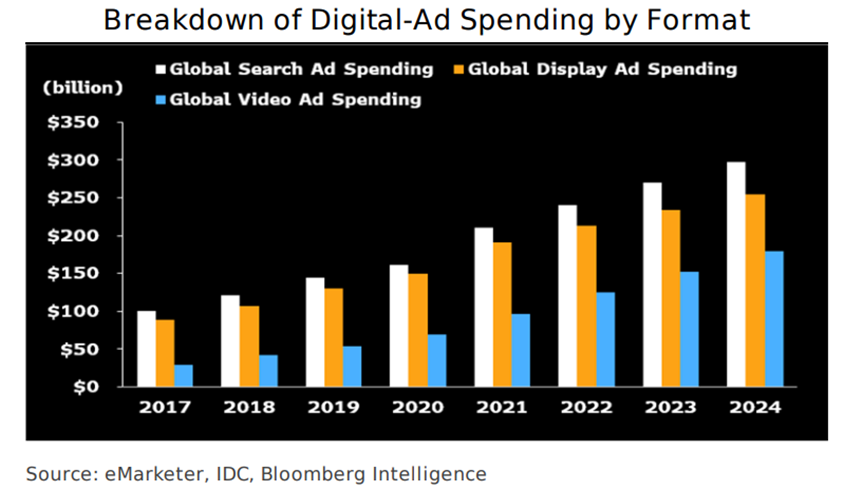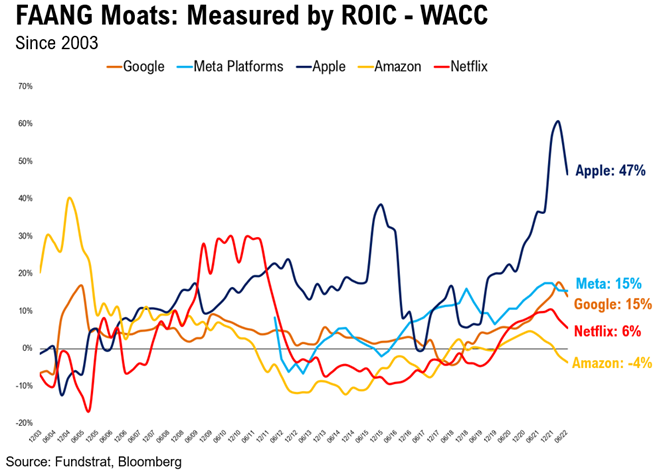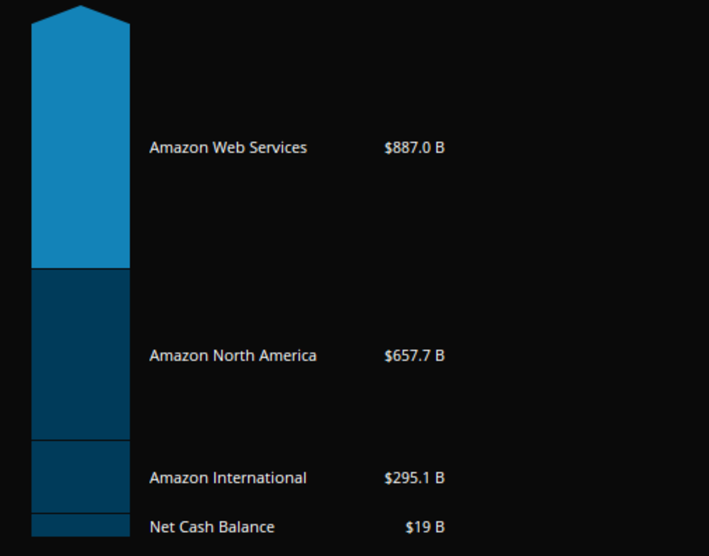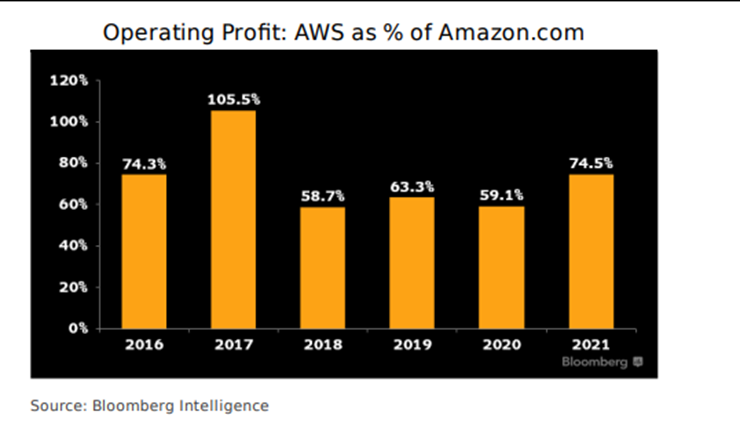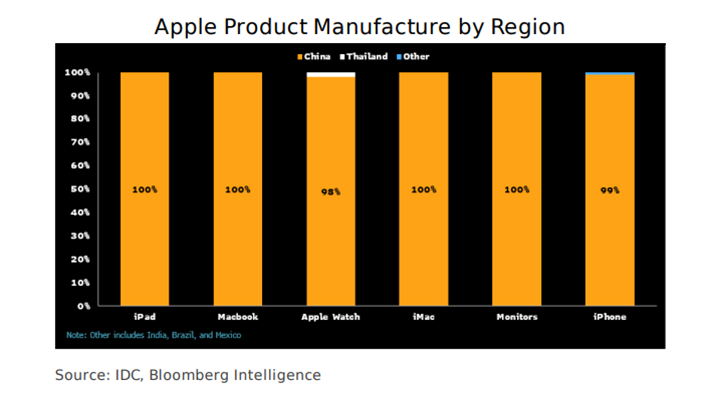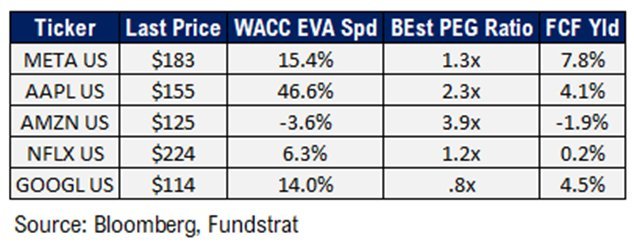On August 9, 2011, Apple became the largest company in the world by market cap when it briefly exceeded Exxon-Mobile for the first time. This marked the beginning of the golden age of the FAANG when their invincibility was assumed, and anything but a positive earnings surprise was out of place. Of course, the names did very well in the post-pandemic period as the digital transformation was accelerated, and the wide moats of the Tech generals provided some respite from new risks. In the 2010s, the companies had an air of invulnerability that has now since been shattered. Anti-trust concerns, the concentration of key revenue drivers, and waning customer loyalty because of reputational issues have been headwinds for Technology. To add to these headwinds, both sides of the political spectrum have issues with these prodigious firms. The Golden Age may be over, but that doesn’t mean these stocks aren’t still good places to put your money to work.
Let’s fast forward to today. When the liquidity from the most accommodative Fed policy in history was turned with Fed tightening, multiple compression began in names with high P/Es, and the almighty tech firms were not spared. On May 11th, Apple was superseded by Saudi Aramco as the world’s most valuable company when Apple’s market cap dropped below Aramco’s briefly because of the carnage in markets. Since the lows the company experienced in the last months, it has quietly rallied 16%. So, this earnings season is a juncture for Technology. Will the multiple compression continue after the recent relative strength? Or will the Generals regain their allure and supremacy? Our research heads have started to see Technology as a place where relative strength is likely in the coming months, and we wanted to do a deep dive on these names for our subscribers. We did a piece on the intangible value of Big Tech back in May available here, but we wanted to expand.
There is an entire cottage industry of “FAANG doubting.” While we believe it is never good to buy and hold anything blindly, much of the hyperbole about the death or maturation of FAANG is misplaced in our opinions, but critical issues indeed bear consideration. While these companies are great at enhancing their earnings potential and staving off the effects of industry maturation that some industries have experienced, they will ultimately become more “normal.” They are more typical than you might think, particularly at these levels. They are trading at a mere fraction of the 200% premium to the market premium that technology had in the web boom.
There is never a shortage of critical and bearish material on the FAANG names. The old saying in the Army is that the higher you go up the flagpole, the more your rear shows. However, despite the doubts and discourse about FAANG’s best days being behind it, we firmly believe these are strong companies with tremendous earnings potential that may have matured in some respects but certainly have much more to offer to shareholders. Importantly, all of them aside from Netflix are in at least one of our strategic thematic portfolios, which have a time horizon of 3-5 years. However, the world has changed dramatically, and we need to escape the “FAANG’s can do no wrong” group think that pervaded the 2010s. These companies have new challenges and risks that investors should carefully evaluate.
Are The FAANG Going The Way of The Nifty Fifty?
Open-mindedness and a willingness to accept changing circumstances are also crucial to investing, which requires testing even your most fundamental assumptions. Ones you might not realize are assumptions until the ground beneath them caves in because of a rapidly changing world on the precipice in more ways than one. Groupthink and its pitfalls are a perennial driver of markets, and anyone and everyone are susceptible to it. For example, you probably would have been enticed if you heard about a stock trading at 90x earnings because of a revolutionary technology it has produced in late 2020 or early 2021.
This qualifier, though, a 90 PE stock with revolutionary technology, applied to Polaroid in 1972. Clearly the market had overpriced this firm’s prospects. During this same year, Eastman Kodak had a P/E ratio around twice as high as Apple’s is today. So, even though, in our opinion, FAANG is still earlier in its lifecycle as a group and is taking great pains to ensure resilience it is still always worth differentiating these stocks and thinking about them beyond the luster or the antipathy, they may inspire in you. They are heavily covered in financial and other media, and their regulation and effect on competitiveness and people have become highly controversial. They have passed the headwinds associated with the earliest stage of their industry life-cycle and have moved to a more mature phase, but they are fiercely competitive and always have an eye on securing their moats.
Indeed, the FAANG stocks will eventually lose their luster and will also likely lose their ability to grow at such a rapid pace. Silicon Valley will one day be akin to the rust belt if current technological trends are gamed out. We will likely encounter the physical limits of Moore’s Law quicker than the P/E ratios of FAANG imply they can keep earnings growth at current levels for. In other words, some FAANG’s P/E ratios imply they can keep earnings at current levels even with a massive change in computing that could be an existential threat to some core revenue drivers. Will the FAANG be the ones to make quantum computing work on a large scale, or will they be victims of this change? Or will quantum computing be a dead-end? Questions like these are essential to consider when you’re buying a stock with most of its net present value comprised of earnings a decade or more into the future. There’s certainly no shortage of them to consider. For instance, a large percentage of FAANG total earnings goes into employee stock option expense which investors give them a pass on. But earnings look better than they are because of the accounting quirk of adding this expense back, which obscures the economic impact.
What’s In a Name?
FAANG has been one of the most influential stock groups in history. The saying goes that you “don’t get fired for owning FAANG.” However, the luster of this exalted group has come under fire during the tumultuous first half of 2022. There are ample discussions about whether we need a new moniker to describe the highest-growth stocks in the market. Jeffries analysts have suggested investors switch to MANG (Microsoft, Apple. Nvidia, and Alphabet) to weather a rising rate environment and tightening cycle more successfully than the previous FAANG grouping.
CNBC’s Jim Cramer suggested the new acronym should be MAMMA for Meta, Alphabet, Microsoft, Amazon, and Apple. Some have even endorsed the term FMAGA for Facebook, Microsoft, Apple, Alphabet, and Amazon. Regardless of which acronym you think is correct, the extraordinary economic conditions and unpredictable economic environment have necessitated rethinking these stocks as a monolithic entity. So, where do we stand? We’ll rank these fabulous stocks in rank from our least to most favored and give you an idea of critical risks and catalysts.
The 2010s were incredibly festive, and the FAANG stocks were at the vanguard of the longest bull market in history. They also got hard hit when the Fed tightening and the seemingly endless liquidity that had been egging on market gains began to ebb. As the Fed tightens and raises rates, long-duration assets like the prodigious American technology titans suffer more since more of their net present value is comprised of future earnings. We also want to keep an eye on the inevitable growing pains of the future these firms will face along the way and understand them the best we can in the present. We try to focus on ways of comparing the FAANG that consider different business models and the infinitely complex accounting and revenue obfuscation that is rampant at these big guys.
We will go into our thoughts on specific companies below. All of our research heads now believe that FAANG will have at least significant relative outperformance in the second half. Some, maybe even all of the FAANG, could have tough upcoming earnings reports, particularly those with heavy exposure to digital advertising. However, our team believes that over a medium-to-long time horizon, this will ultimately prove a buying opportunity.
Netflix (NFLX -1.23% )
Netflix is the red-headed stepchild of the once iron FAANG moniker. More than any other name in the group, many folks argue it shouldn’t been on the list given the superiority of its’ peers’ growth prospects and revenue diversification. Two quarters ago it had a large drop as subscriber growth slowed for the first time in years. Last quarter’s results showed some stabilization. The company was a clear stay-at-home beneficiary and analysts had a tough time anticipating changes in demand given the extraordinary catalyst. The other major factor is that Netflix is experiencing heightened competition from key competitors (including other FAANG names like AAPL and AMZN) and is experiencing diminishing returns from capital expenditures. Disney’s claim that they surpassed Netflix in subscribers is somewhat dubious since they double-counted some folks, but the competition is coming fast and fierce from legacy media and other FAANGs alike. The stock is still the king streamer, and its original content has proven very viable, but the name has become somewhat of a “show me” story in our opinion, as is the lower-tier ad-supported subscription.
The company’s margins in the US segment are not expected to increase very much over the next few years. Projected subscriber growth in US markets is lower than the international segment, so increasing global economic weakness could be a major headwind. Because geopolitical concerns and economic impacts from the war are harder in Europe, Asian subscriber growth will become increasingly important for overall growth. Also, when one accounts for password sharing, the prospect that the company has reached peak growth seems more likely. When you adjust for households watching for free among international subscribers their market penetration is close to 41% compared to the 28% figure the firm had previously cited. The outcome of cracking down on password sharing remains to be seen.
There are very few exciting growth areas where FAANG components aren’t directly competing. The key difference between Netflix and the other FAANG is that all the other components have much more diversified sources of revenue whereas Netflix’s revenue is concentrated in paying streaming subscribers. The competition is taking a toll though. For example, Disney added about 2 times as many paid subscribers as Netflix did in 2021 despite their exaggerated subscriber numbers.
While the company has some exciting initiatives it may be able to spin some good growth out of areas like gaming, we aren’t currently thinking this stock is in the same class as Apple, Amazon, Alphabet and Microsoft. A good way to measure a company’s moat is to see a trend in the spread between Return on Invested Capital and Weighted Average Cost of Capital (ROIC-WACC). While the stock may be oversold and the most recent quarter was much “less bad” than feared, this spread has been moving in the wrong direction and the company’s capable competitors appear well equipped for the ongoing streaming wars which will put further pressure on this spread. For now, we think it’s appropriate the Netflix’s multiple has come down from its more diversified FAANG peers.
Meta Platforms (META 0.41% )
We recently cited Meta because we see it as likely to benefit from the economic rise of Millennials. Meta Platforms is one of the most controversial of the FAANG cadre, it also suffers from concentration and increasing competition namely from TikTok and YouTube. Not only is it concentrated in current revenue drivers with Advertising composing over 90% of revenue it also has the most concentration in frontier technology investment. The top 10 advertisers on Meta also comprise the vast share of revenue as well.
The company’s long-term fate rests on the success or failure of the Metaverse. Also, despite the prodigious scale of networks and glitzy technological achievements, if you’re getting 90% of your revenue from advertising, you’re going to be exposed to the fluctuations of the business cycle. In other words, many small businesses will forego their online advertising when business conditions worsen or if a recession begins. So, Meta and Google, with their heavy reliance on advertising revenue, are a bit more cyclical than Apple particularly as it moves to capture more of its revenue with a subscription model. There is also concentration within concentration: 20% of total impressions make up 80% of web developer advertising revenue. Concentration can be a double-edged sword and if all else is equal, it tends to increase volatility. Meta’s segments and their estimated value are shown below.
On the sell-side, many analysts have been downgrading estimates for Meta going into this quarter. Nonetheless, the retreat in price has almost given the stock a GARP-ey quality that institutional investors like. This is at least partially due to cyclicality we mentioned. Recession fears have been building, but in the recent weeks they’ve been declining as economic data showed some strength, particularly in labor markets. Morgan Stanley and Credit Suisse are two shops that have recently lowered earnings forecasts and price targets for Meta despite still having the firm as a buy. The macro headwinds aren’t the only reason for concern. Members of the world’s most competitive cadre of stocks often suffer from the ruthlessness of their peers. Apple’s changes to identifier-for-advertisers have been a problem and were also at the crux of their high-profile earnings miss on Q421 earnings.
Meta has some short-term problems and if it’s Metaverse investments prove to be ill-fated this will be a major negative but being able to assess the financial worthiness of these investments will not be able to happen anytime soon. The company still has a massive network and user-base and the reputational issues that reached a crescendo over the pandemic seem to have subsided a bit. Some anti-trust pressure has recently come off as well and Alphabet seems to be in the hot-seat. There was some relative weakness in this last quarter’s earnings, but for investors who have a long-term time horizon this weakness should be a good buying opportunity. Instagram and WhatsApp are still bright spots in the Family of Apps portfolio. The firm has also made efforts to mimic successful operating practices of TikTok. There is a lot of bad news priced into the stock. Still, we see a much-improved risk/reward tradeoff over a medium-to-long-term horizon.
Alphabet (GOOGL 0.85% )
We like Alphabet for its exposure to major strategic tailwinds including the growth of AI/automation, the rise of Millennials, and high levels of asset intensity. Alphabet has recently undergone a stock split. While a stock split shouldn’t create any economic difference in a shareholder’s position other than share count and metrics that use it, there is evidence that the effect on performance has historically been bullish. This effect is most pronounced for Consumer Discretionary and Technology according to Bank of America Research as shown below.
While Alphabet is on the more cyclical side of FAANG like Meta, it may actually be able to gain at Meta’s expense as it, on its face, seems better equipped to handle the advertising headwinds and doesn’t have the same erosion of customer loyalty. Last quarter’s results supported this notion. Alphabet’s ad growth has also been outpacing that of its social media competitors. It has more exposure to lucrative video ads through YouTube. However, Alphabet is probably the FAANG company most exposed to anti-trust efforts and regulatory efforts to dull down the fangs of the FAANG. Governments on both sides of the pond have serious anti-trust efforts underway. However, when you analyze the FAANG with the PEG ratio (using Bloomberg’s Best PEG Ratio), Alphabet’s is not only the lowest of the group, it is also below one which suggests you’re getting growth potential on the cheap.
It seems that Apple’s privacy changes will affect the social media advertising (direct response ads) more so than Google’s bread and butter which lies in search and video advertising. YouTube is one of Google’s crown jewels and it has been growing twice as fast as Netflix and is positioned to potentially gain from the price hikes rivals will likely need to implement. YouTube’s global user base is also 3x higher than Netflix. The freemium ad model YouTube uses results in significantly lower revenue per user, but it is also growing, and consumers seem to enjoy and perhaps even prefer this model compared to some of the other competitors in the $500 billion digital advertising market. Alphabet’s earnings did show some pain from slowing demand, but we think they are better positioned than Meta relatively. Alphabet management has commented on the potential for economic weakness and has also paused hiring, so its actions suggest it sees weakness ahead.
Amazon (AMZN 0.50% )
Amazon has had a tough year, but remains strong in our opinion. Its low margin growth strategy was once hated by Wall Street, but now investors have definitely seen the light. It’s had amazing returns over the years and the faithful benefitted greatly. However, it has matured from a lean technology company to a sprawling real-economy behemoth. For example, it is now the second largest private employer in the United States behind Wal-Mart. It has an interesting strategy with a sprawling network of businesses diversified across much of the economy and its primary growth driver, AWS, continues to lead cloud services. Amazon is the undisputed king of cloud. Interestingly, it has recently had a negative ROIC-WACC spread which can often be used as a good analytical proxy for economic moats.
Do remember though, those who have doubted Amazon because of things like low margins in the past have had to eat humble pie. The company has been on acquisition frenzy and has many growth levers to pull. However, given that the company has sprawling physical assets and labor costs in addition to its more traditional Technology assets, tangible and intangible, it is of course exposed to the business cycle and has its fortunes very tied up with a consumer who may be getting a bit exhausted by price pressures among other things. Amazon has one of the most successful streaming plays as well. Brian Rauscher’s earnings work on the name suggest there is a lot of bad news baked in. The company recently had its best Prime Day of all time. The company certainly has no shortage of areas it could potentially disrupt. It recently partnered Grubhub to enhance the value of the prime membership. It also just acquired One Medical. The company’s investment in EV maker Rivian was also a boon to earnings in a recent quarter where it up-ended expectations.
The company’s main growth driver is its AWS segment, which is forecast to have prolific growth over the next years. While some stress that competitors are making headway, the digital transformation’s pace means there’s likely enough pie for everybody, and expecting Amazon to cede its primary place in this lucrative market seems unrealistic. It’s continuing to outperform rivals and continues to improve its product. It has big plans for international growth as well, but the investments required to achieve this may put pressure on margins over the medium-term. However, it’s important to realize that the main growth driver and contributor to profits is AWS, so as AWS goes, so goes Amazon’s share price.
The stock has many risks and Wal-Mart’s pre-announcement about piling inventories has led folks to speculate the Amazon may face similar problems. This company’s massive retail footprint makes it potentially susceptible to the “bull-whip” effect that has been plaguing large retailers as they try to optimize their inventory levels in the face of uncertain demand. Target issued a similar warning in June. Of course, the big-box retailers that compete directly with Amazon on e-commerce don’t have the crown jewel of cloud computing under the same umbrella. Nonetheless, Amazon could definitely face headwinds in this upcoming print from a weakening consumer and foreign currency woes.
Apple (AAPL -0.99% )
Well, our team actually did an article in October 2020 called “The Fairer of the FAANGs” and this member of the antiquated acronym still holds our top spot. The company is very exposed to supply chain issues in China and this is probably the biggest risk going into the print. Interruptions, delays, or problems here could cause dents to projections but you must also temper this risk with the fact that if you have Apple as a customer, the world’s largest company, you’ll probably do your darndest to keep them happy. For example, chip interruptions did influence the company but less than many anticipated. It helps if TSMC prioritizes your business more than anyone else’s, as they do with Apple. As you can see in the chart above showing ROIC-WACC, the company has by far the biggest moat when using this as a gauge. The company is making efforts to diversify its manufacturing base, but it has a long way to go as you can see below.
The company also has big revenue exposure to China. About a fifth of sales came from there in 2021. Europe is its second-biggest revenue segment behind America at around 25% and economic weakness here could hurt earnings in the short-term. The FAANG companies, even Apple, have gotten more sensitive to the economy as they’ve become bigger. However, Apple’s efforts to spur growth into the future are quite exciting. It has its finger in many pies, it has the strongest brand on the planet Earth, and it has a real shot of breaking into the EV market. The company has been moving toward a subscription model which should smooth revenue fluctuations from product cycles. The company had many doubts about its services strategy, but that proved ill-fated for the doubters as well.
Apple’s streaming service is making quiet gains. The App Store is still the primary growth driver and does face some anti-trust issues, but Apple is also probably the best positioned to parry government forays and reputationally enjoys less ire of the public and lawmakers than Google and Meta seem to draw. Apple might experience slightly lower sales this year as a result of curtailing production from supply chain issues, but the long-term drivers of growth are delectable and convincing. Previously lackluster products like the Mac and the I-Pad have begun pulling their weight as well. Apple’s prodigious buyback program and superior management and execution will likely continue rewarding shareholders and we think the risk/reward for this name remains enticing even after the recent rally it has had since May/June. The worst of multiple compression from Fed tightening is hopefully over and this company’s unique culture and focus on excellence in the consumer’s eyes has staying power in our team’s opinion. It will also be a key beneficiary of our strategic investing themes over the next 3-5 years.




